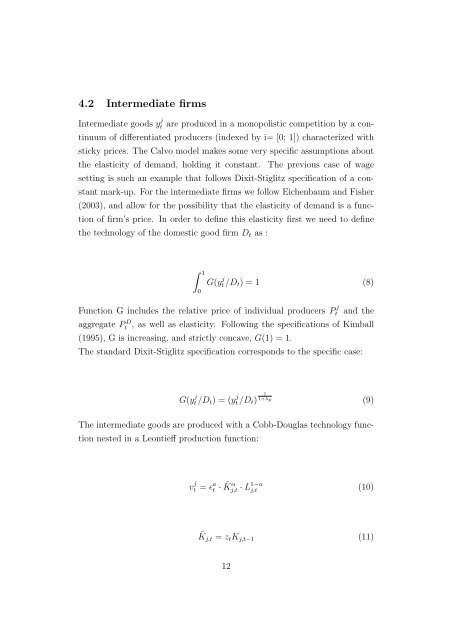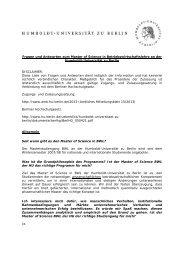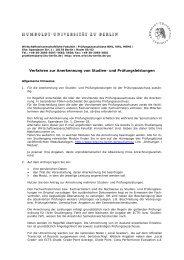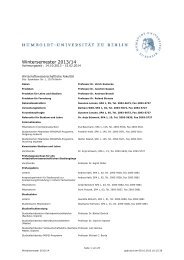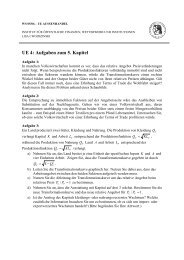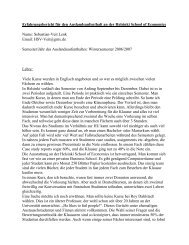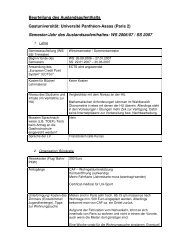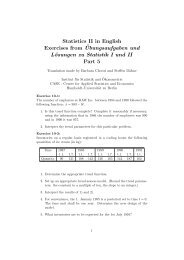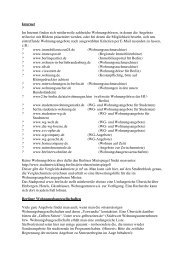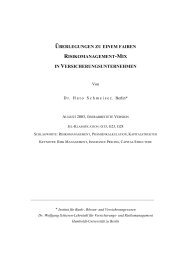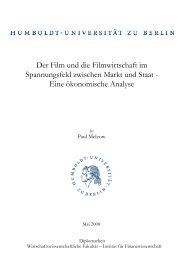Master Thesis - Humboldt-Universität zu Berlin
Master Thesis - Humboldt-Universität zu Berlin
Master Thesis - Humboldt-Universität zu Berlin
Create successful ePaper yourself
Turn your PDF publications into a flip-book with our unique Google optimized e-Paper software.
4.2 Intermediate firms<br />
Intermediate goods y j t are produced in a monopolistic competition by a continuum<br />
of differentiated producers (indexed by i= [0; 1]) characterized with<br />
sticky prices. The Calvo model makes some very specific assumptions about<br />
the elasticity of demand, holding it constant. The previous case of wage<br />
setting is such an example that follows Dixit-Stiglitz specification of a constant<br />
mark-up. For the intermediate firms we follow Eichenbaum and Fisher<br />
(2003), and allow for the possibility that the elasticity of demand is a function<br />
of firm’s price. In order to define this elasticity first we need to define<br />
the technology of the domestic good firm D t as :<br />
∫ 1<br />
0<br />
G(y j t /D t ) = 1 (8)<br />
Function G includes the relative price of individual producers P j<br />
t and the<br />
aggregate Pt<br />
D , as well as elasticity. Following the specifications of Kimball<br />
(1995), G is increasing, and strictly concave, G(1) = 1.<br />
The standard Dixit-Stiglitz specification corresponds to the specific case:<br />
G(y j t /D t ) = (y j t /D t ) 1<br />
1+λp<br />
(9)<br />
The intermediate goods are produced with a Cobb-Douglas technology function<br />
nested in a Leontieff production function:<br />
v j t = ɛ a t · ˜K α j,t · L 1−α<br />
j,t (10)<br />
˜K j,t = z t K j,t−1 (11)<br />
12


